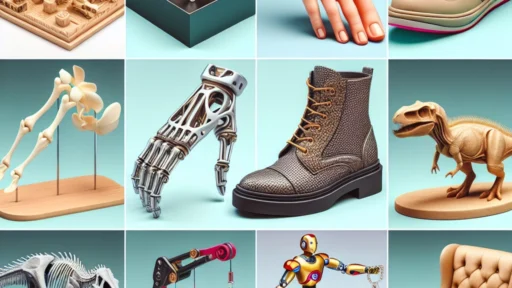3D Filaments Explained: PLA, ABS, PETG, and More
If you’re new to the world of 3D printing, you’ve probably come across a slew of jargon that feels overwhelming at times—like "filament" and "thermoplastics." Don’t worry! Today, we’re breaking it all down, examining some of the most popular 3D printing materials: PLA, ABS, PETG, and a few others. Understanding these filaments will help you choose the right material for your projects, and you’ll be ready to print in no time!
PLA (Polylactic Acid)
Let’s kick things off with PLA, perhaps the most popular filament among beginners and hobbyists. PLA is a biodegradable thermoplastic made from renewable resources, like cornstarch or sugarcane. This makes it an eco-friendly option that appeals to those concerned about the environment.
Why Choose PLA?
- User-Friendly: It’s incredibly easy to print with, often requiring no heated bed.
- Vivid Colors: PLA is known for its bright, vibrant color options, making it perfect for aesthetic projects.
- Low Warping: It has minimal warping, which helps create clean prints with sharp details.
But, there’s a catch: while PLA is fantastic for decorative items and prototypes, it’s not the best for functional parts that need to withstand heat or stress. That’s where other filaments come into play.
ABS (Acrylonitrile Butadiene Styrene)
Next up is ABS, a filament often found in things like LEGO bricks and various household items. It’s durable and resistant to impact and heat, making it a go-to for functional prototypes or parts.
Benefits of ABS:
- Durable: Perfect for items that need to endure wear and tear.
- Heat Resistant: ABS can handle higher temperatures than PLA, making it suitable for car parts and electronic housings.
- Post-Processing Friendly: You can easily sand it, paint it, or even use acetone to smooth out the layers.
However, be aware that ABS can be a bit tricky to print with. It tends to warp as it cools and releases fumes during printing, so a well-ventilated space and a heated bed are recommended.
PETG (Polyethylene Terephthalate Glycol)
If you’re looking for a middle ground between PLA and ABS, look no further than PETG. This filament is known for its excellent layer adhesion, durability, and flexibility.
Perks of PETG:
- Strong and Flexible: It’s tougher than PLA and almost as easy to print as it.
- Chemical Resistance: PETG withstands acids and bases, making it great for food containers or parts exposed to harsh environments.
- Less Warping: Although it still requires some careful handling, PETG warps less than ABS during printing.
Many 3D enthusiasts love PETG for its versatility, and it’s become a favorite for those desiring a balance between decorator and functional prints. Plus, it doesn’t have the same unpleasant fumes as ABS!
TPU (Thermoplastic Polyurethane)
Now let’s shake things up with TPU, a flexible filament that’s perfect if you’re looking to create rubber-like objects. Think of phone cases, soft-touch grips, or even wearables!
Why Use TPU?:
- Flexibility: It can stretch and compress, which makes it ideal for items that need to bend or flex.
- Durability: TPU has a good resistance to abrasion and impacts.
- Easy to Print: It requires special settings on your printer, but it’s manageable for most users.
Just keep in mind that printing with TPU can require a bit more patience, as it needs slower print speeds to prevent jamming.
Other Noteworthy Filaments
While PLA, ABS, PETG, and TPU cover a lot of the mainstream options, the world of 3D printing filaments is vast. There are specialty materials like Nylon, which is incredibly strong and flexible, and ASA, an outdoor-friendly alternative to ABS that resists UV light. There are even wood-filled filaments that give your prints a rustic look!
Choosing Your Filament
In the end, selecting the right filament depends on your specific project requirements. Consider factors like the intended use of the printed item, the environment it will be in, and, of course, how easy you want the printing process to be. It’s also worthwhile to experiment with different materials; each has its unique charm and capabilities.
So dive into the world of 3D printing with confidence! With a bit of practice and exploration, you’ll be whipping up amazing prints in no time. Happy printing!






